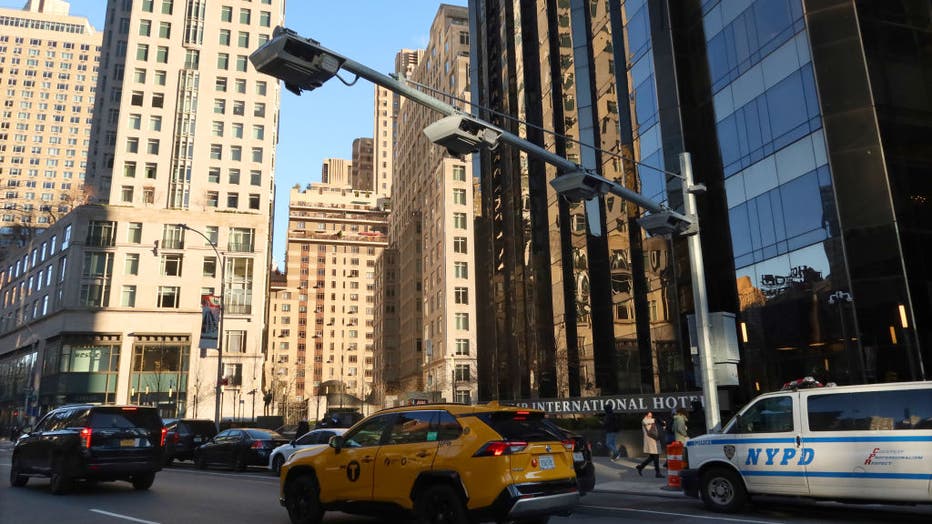New NYC congestion pricing plan unveiled; drivers can once again expect tax
NEW YORK CITY - NY Gov. Kathy Hochul announced a revised NYC congestion pricing plan at a press conference on Thursday morning.
NYC congestion pricing plan
"And I'm proud to announce we have found a path to fund the MTA, reduce congestion and keep millions of dollars in the pockets of our commuters," Hochul said. "Under this plan, the MTA will implement a congestion pricing plan with a reduced daytime toll of $9 beginning in January."
The program, which would charge drivers a fee for entering Manhattan south of 60th St., aims to ease traffic in central Manhattan, reduce pollution and raise funds for public transit improvements.
Hochul proposed a $9 base toll instead of the original $15 for cars to enter the congestion zone during peak hours, insisting the money raised from the lower fee would still be enough to cover the MTA's costs.

NEW YORK, NY - DECEMBER 20: A taxi cab passes under congestion pricing toll readers hanging above Broadway in Columbus Circle on December 20, 2023, in New York City. (Photo by Gary Hershorn/Getty Images)
Back in June, Hochul slammed the brakes on the plan, arguing the toll was too high for hardworking New Yorkers. But critics accused Hochul of playing politics to protect Democrats during a big election year.
"It seems now, it’s clearly apparent, that the plan all along was just get through Election Day," Staten Island Borough President Vito Fossella said.
The governor has faced mounting pressure from transit advocates to secure funding for the transit system. Congestion pricing tolls were expected to generate around $15 billion in revenue for the MTA's capital program.
But the late pause created a major budget deficit, forcing the MTA to shelve accessibility improvements, hundreds of new electric buses and more.
"This announcement is great news for New Yorkers who have been fighting for years for safer streets, cleaner air, better public transit, and really, a testament to the fact that we know that this policy is critically needed for New York," said Elizabeth Adams of the advocacy group Transportation Alternatives.
Other cities around the globe, including London, Stockholm, Milan and Singapore, have similar systems, but New York's system would be the first in the U.S. The aim of the such systems is to reduce traffic and pollution while encouraging use of public transit systems.

